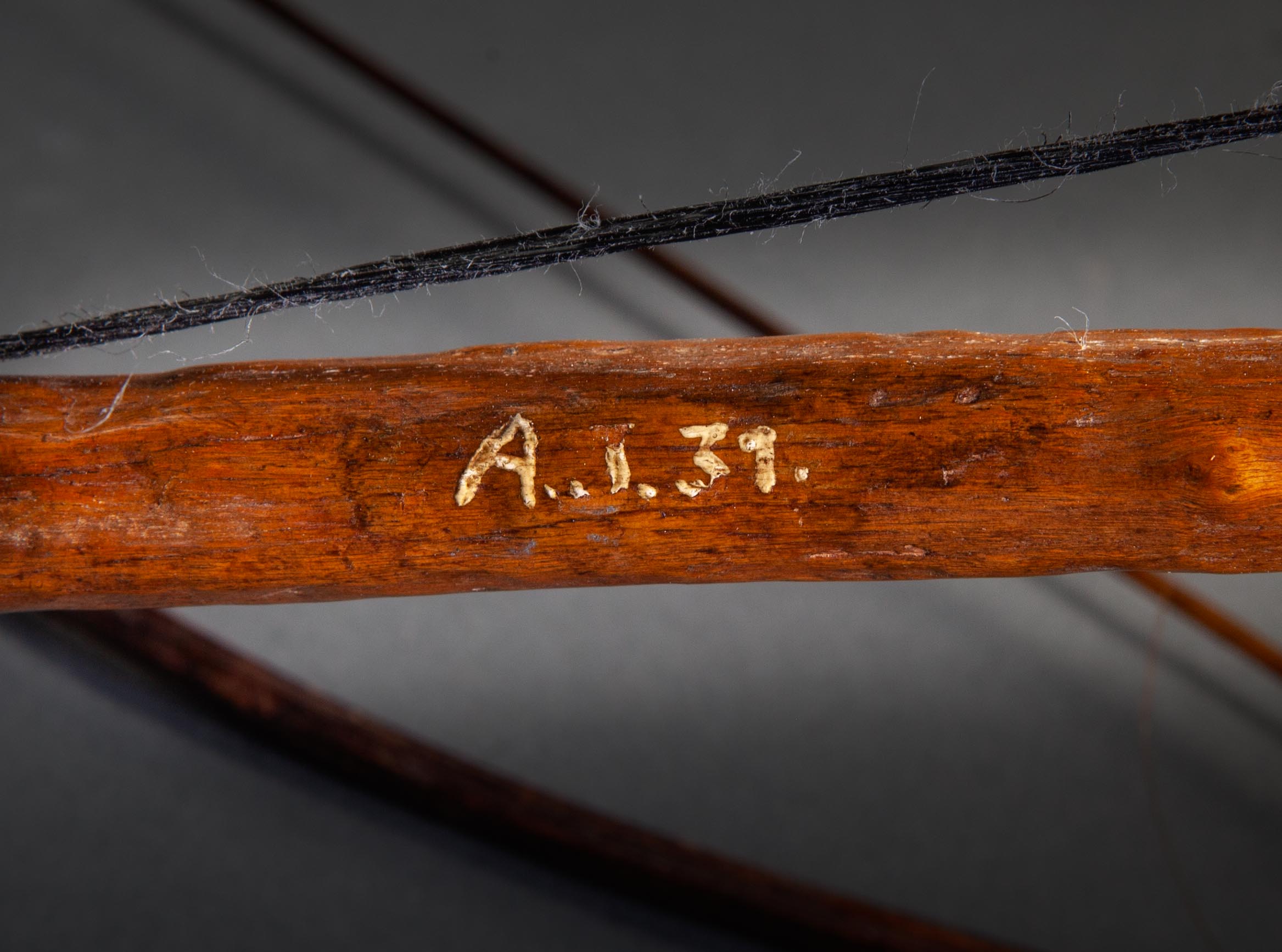IMZAD
Tuareg country, 19th – 20th century.
Single-string Tuareg fiddle whose sound box is made from a gourd over which goat skin is stretched. The rope is made of a strand of horsehair, and the arch of a simple arched branch.
The use of the instrument is exclusively reserved for women, with which they traditionally accompany men’s songs.
Almost disappeared a few years ago, a campaign by Algerian cultural services encouraged its reconstruction.
Father de Foucauld presents it as “the favorite musical instrument, noble, elegant par excellence (…), after which we sigh when we are far from the country, of which it is like the symbol and of which it recalls all the sweetness”… (1)
An emblematic figure of Tuareg music, we find evidence of its use in a significant part of Algeria, Niger, Mali, as well as in Libya and Burkina Faso.
A typically nomadic instrument, abandoned as soon as it is no longer used, old imzad models are extremely rare.
Materials: Calabash, wood, horsehair, string.
Dimensions: Length: 69,7cm Width: 28,5cm
Provenance: Colonial Economic Agency.
In : medecine-des-arts.com/fr/article/imzad.php


